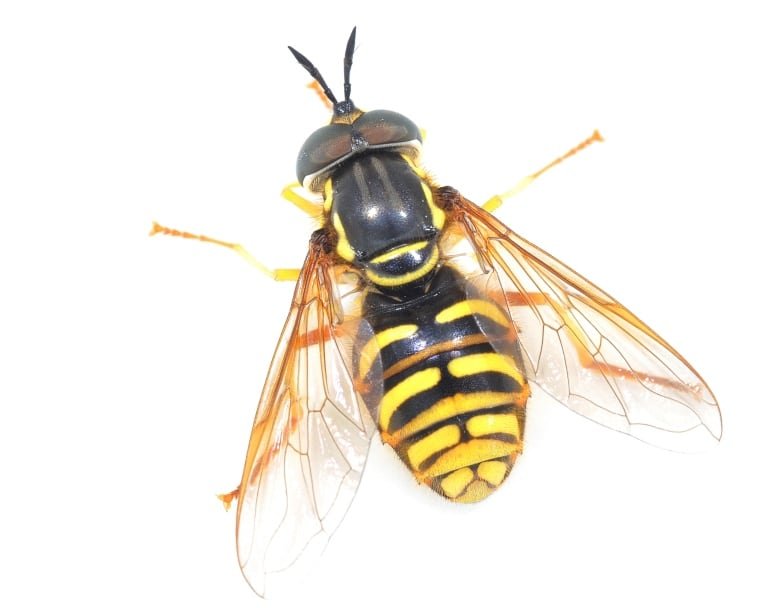It looks like a bee and acts like a bee, but it’s not actually a bee.
The hoverfly is known as a bee mimic and it’s a lesser-known key player in Alberta’s agricultural industry.
CBC’s Edmonton AM sat down with Rachel Pizante, a PhD student in conservation biology at the University of Alberta. She led a study looking at the habitat that helps this family of flies thrive — and boost crop yields. The study found 90 species of hoverflies.
This interview has been edited for length and clarity.
So what exactly is a hoverfly?
A hoverfly is a fly — but it looks like a bee. Unlike bees which have four wings, flies are going to only have two wings. And these hoverflies, they eat nectar and pollen. And because they visit flowers, they can act as pollinators.

And is that why they are important for agricultural producers?
Yes. And in our region as well, they’re actually the most common visitors to canola crops specifically.
Now, given that they’re important for canola producers, what did your research focus on specifically?
My research focused on how they move in and out of crop fields, because when a canola crop blooms, that’s a ton of flowers — so a ton of food just appearing on the landscape.
We looked at how that kind of a big resource pulse impacts how they move. And then how the vegetation in the borders of those crops … how that impacts how they move in and out of the crops.
Why are pollinators important to crops like this?
They can help increase the crop yield. Although canola is predominantly wind pollinated, it does benefit from animal pollination as well.
The wind blows the pollen around, so then the pollen goes from one plant to another plant and they’re able to produce more seeds, which is what we want from canola: bigger and more seeds.

It looks like a bee and acts like a bee, it might actually be a bee. The hoverfly, known as a bee mimic, is crucial for Alberta’s agricultural industry and is the focus of Rachel Pizante’s research. She’s a PhD student in conservation biology in the University of Alberta’s Department of Renewable Resources.
Where did you go to find the hoverflies?

And so do bees not do canola? Is it all about the hoverflies?
In our region, it is mostly hoverflies.
Along with this study, we were also doing netting on the canola plant. We were catching insects that were visiting canola plants and we found that by far the most dominant insect visiting those crops were hoverflies, unless there were honey bee hives around. If there’s a honey bee hive, the honey bees visited canola more, but out of all the native bees — so things like bumblebees — hoverflies were visiting the canola most frequently.
WATCH | What is a hoverfly?:
The hoverfly, known as a ‘bee mimic,’ is a key factor in Alberta’s agricultural industry. Rachel Pizante, a University of Alberta PhD student in conservation biology, sat down with Edmonton AM’s Mark Connolly to talk about the importance of the pollinator.
What do you think the most important finding from your research was?
That tree borders seemed to be really important for hoverflies and really important for keeping them in the crops. We saw a ton of hoverflies moving out of tree borders, but not a ton of hoverflies moving into the tree borders.

So that’s obviously something for canola producers to know and be aware of. So what would your practical recommendations be for them?
Keep your tree borders near your crops. They’re also important for other things agriculturally — shelter belts to prevent soil erosion and that sort of thing.















